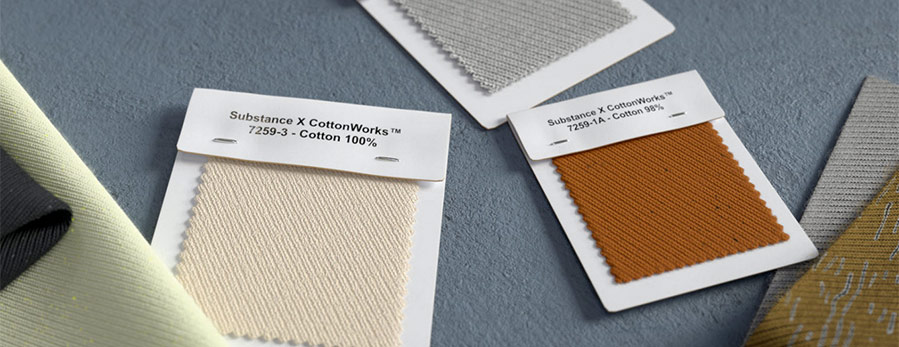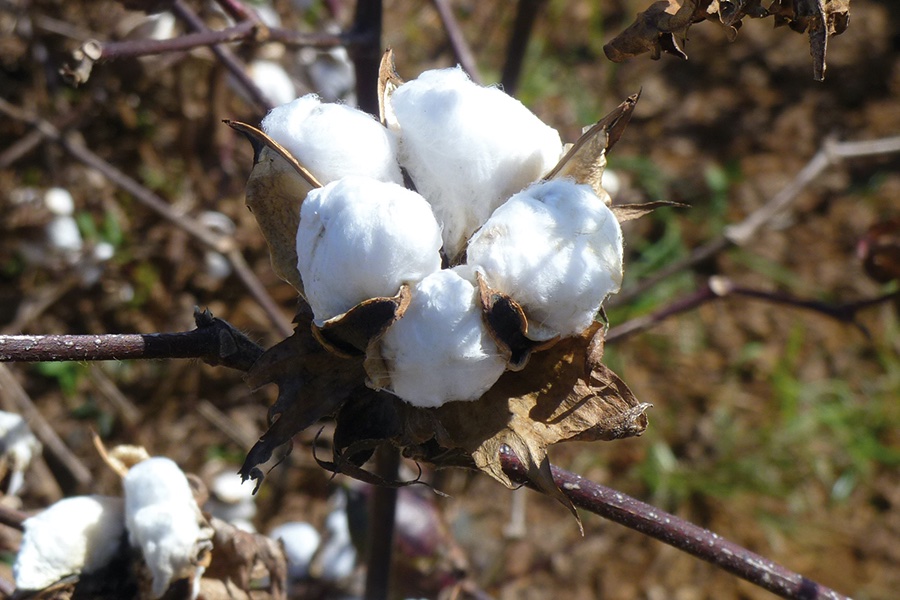#Raw Materials
Digital concept meets real fabric: A new material collaboration between Cotton Incorporated and Adobe Substance 3D

Available through the Adobe Substance 3D Assets library and on Cottonworks.com, the collection blends the flexibility and rapid visualization potential of digital materials with the benefits of traditional material sourcing. Leveraging Adobe Substance 3D applications, the workflow to create the collection uses scan and procedural creation and allows design and development teams to innovate with confidence, bridging the long-standing gap between digital and physical.
In 2022, the apparel and footwear industries rely heavily on digital fabrics as a cornerstone of digital product creation – the various processes through which brands have replaced physical product samples, simulated new designs, sold to consumers through virtual photography, and continued to collaborate with suppliers during the pandemic.
Faced with the challenge of now scaling digital product creation (DPC) strategies enterprise-wide, fashion brands and retailers seek to borrow best practices and toolsets from other industries – tools like Adobe’s leading Substance 3D suite of material authoring and texturing applications – and to adapt them to fit the needs of fashion. Foremost among these needs is the requirement for digital fabrics to look and behave in precisely the same way as physical fabrics, to avoid creating an all-too-common disconnect between 3D digital assets and the eventual end product.
Bridging that gap between virtual and physical, the Cotton Incorporated and Adobe Substance 3D collaboration shows a flexible, time-saving material digitization workflow through a new fabric collection, allowing brand and retail organizations to design digitally, with complete confidence that the fabrics they are using are backed by full composition details that can be shared with mills and fabric suppliers to create an identical physical output.
Cotton Incorporated, a global research and marketing organization dedicated to advancing the use of cotton and digital tools in the supply chain, conceived of the idea for the new collection as a way of building on its pioneering work in digitizing cotton-rich fabrics at the source. To ensure that the collection would be as widely-usable and as accurate as possible, it partnered with Adobe Substance, the leading toolset for 3D texturing and digital material authoring. As a result, the collection comprised of 6 materials, designed with Adobe Substance 3D applications, brings together virtual, parametric fabrics for use in any 3D environment that supports the flexible, powerful, parametric SBSAR format, with accurate physical construction and composition information, ensuring that products designed digitally can be manufactured without compromise. More than digital twins, the Substance 3D materials uses scan and procedural techniques for higher level of control, allowing a vast number of possible variations while remaining in the realm of feasibility.
“Cotton Incorporated was the first fiber company to offer an extensive, free inventory of digital cotton fabrics, allowing a huge range of products to be born digitally, and we recognized an industry need for that work to reach the next level” says Katherine Absher, fashion and digital design manager for Cotton Incorporated. “Working in collaboration with Adobe Substance 3D, we’re now expanding on that vision – allowing designers to create in 3D, using virtual, parametric cotton materials, safe in the knowledge that the recipe for those materials can be shared with suppliers, so the finished, physical article is precisely what the designer intended. This solves one of the industry’s most acute pain points at the same time as cutting down waste, controlling costs, and improving sustainability.”
The new collection of parametric cotton fabric design files is being made available to fashion community, as a download from Adobe Substance 3D Assets (https://substance3d.adobe.com/assets), the 3D assets platform with thousands of customizable assets made with Adobe Substance 3D applications, and from cottonworks.com, the cotton resource for textile professionals.
By combining Cotton Incorporated’s expertise in fabric construction with Adobe Substance 3D digital material authoring software, the joint team set about creating this unique collection by identifying the most relevant material parameters for both creative and commercial fashion teams, and ensuring that these were consistent across both physical and digital fabrics – to an exacting degree that takes full advantage of Adobe Substance 3D applications and that can be reproduced by any brand or individual using the unique Adobe Substance 3D Ecosystem:
“We digitized the fabric collection using two complementary techniques: scan and procedural creation, allowing users to obtain photorealistic results in record time.” says Nicolas Paulhac, Head of 3D Content at Adobe Substance 3D. “The created assets are adaptable to every design workflow, thanks to native integrations with the main fashion design tools (CLO, Browzwear, Lectra, etc.) as well as with every realtime and offline 3D app (Unity, Unreal, Chaos V-Ray, or others). This is an opportunity to create a single library of digital assets that can be used seamlessly at all levels of the fashion design process.”
Adobe Substance artist Pauline Boiteux completed a full set of materials from scans in a few hours. The whole process including the procedural materials was finalized in just two days. The process eliminates the need to scan all the samples of a range, one capture is enough and using Substance 3D Designer, all the color variations can be added in accurately thanks to the color management system. And because they are procedural, the digital fabric parameters can be tailored by users.
For more insight into the process of creating the collection, and an overview of how bridging the gap between digital and physical materials could transform digital product creation workflows, register for the free online workshop https://my.demio.com/ref/mlp4y8tb8iOgps4Q.










canva-900-1.jpg)






